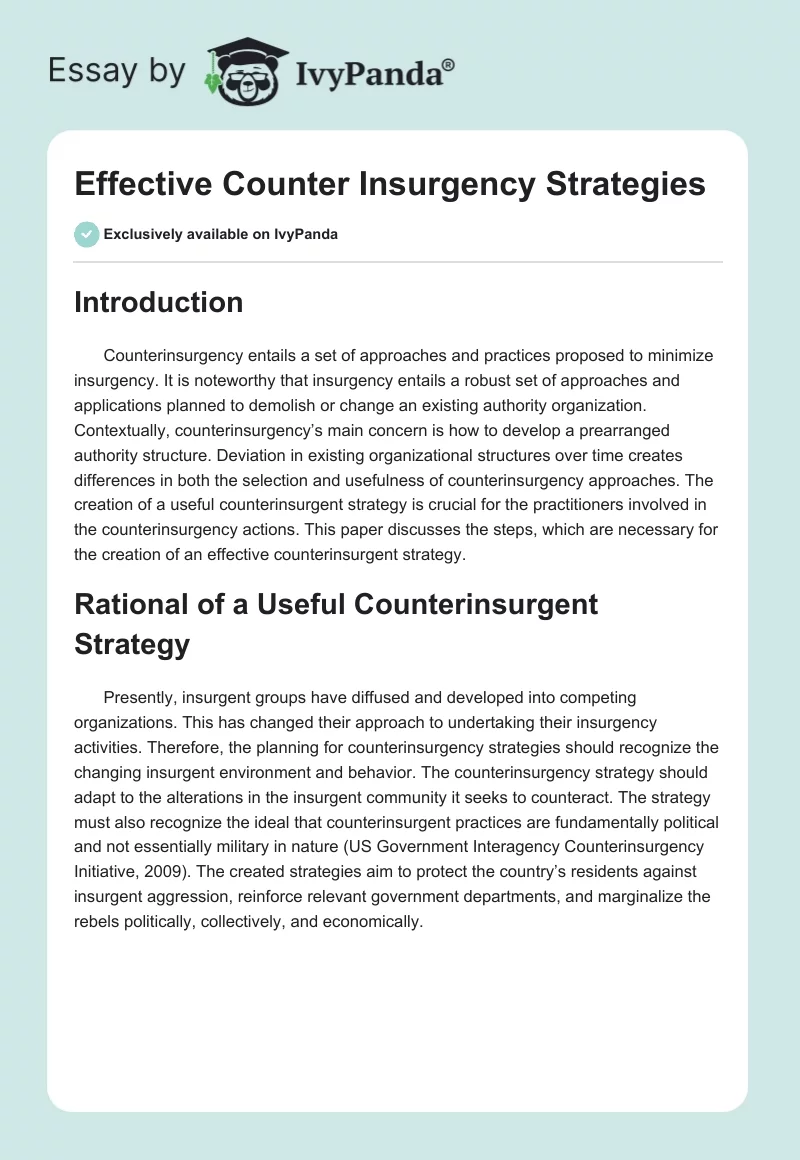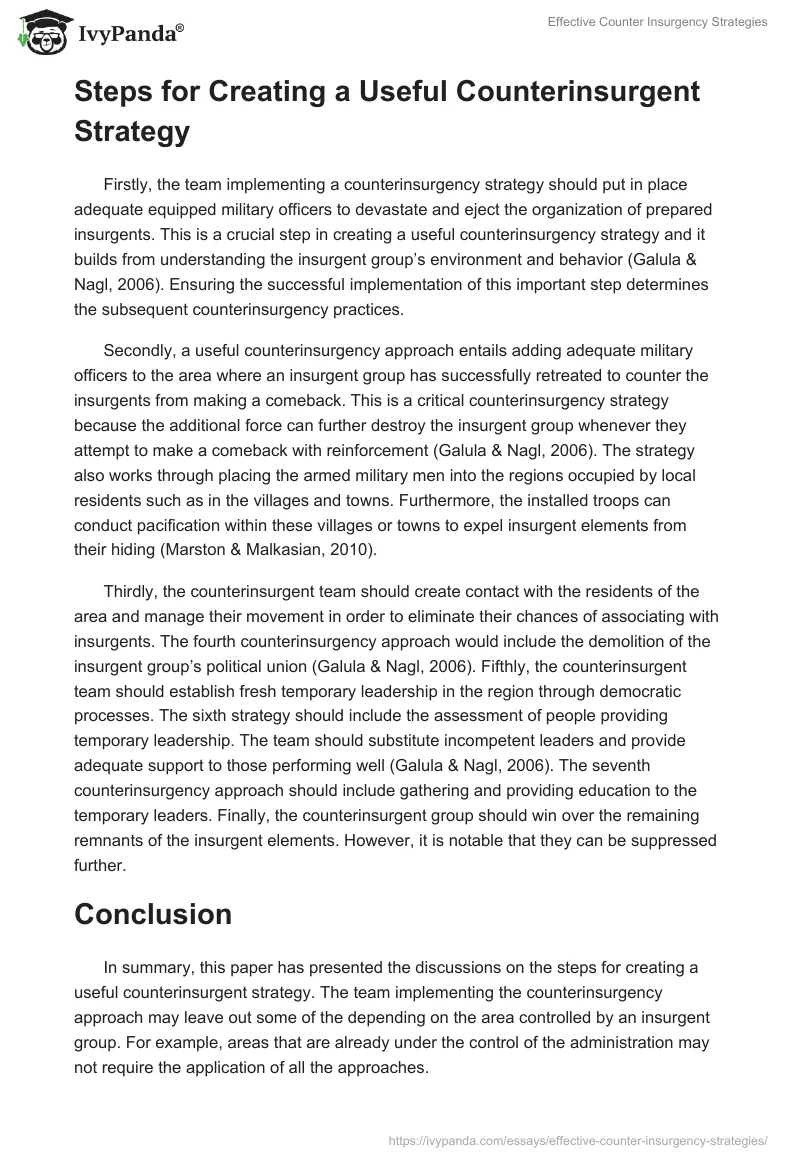Introduction
Counterinsurgency entails a set of approaches and practices proposed to minimize insurgency. It is noteworthy that insurgency entails a robust set of approaches and applications planned to demolish or change an existing authority organization. Contextually, counterinsurgency’s main concern is how to develop a prearranged authority structure. Deviation in existing organizational structures over time creates differences in both the selection and usefulness of counterinsurgency approaches. The creation of a useful counterinsurgent strategy is crucial for the practitioners involved in the counterinsurgency actions. This paper discusses the steps, which are necessary for the creation of an effective counterinsurgent strategy.
Rational of a Useful Counterinsurgent Strategy
Presently, insurgent groups have diffused and developed into competing organizations. This has changed their approach to undertaking their insurgency activities. Therefore, the planning for counterinsurgency strategies should recognize the changing insurgent environment and behavior. The counterinsurgency strategy should adapt to the alterations in the insurgent community it seeks to counteract. The strategy must also recognize the ideal that counterinsurgent practices are fundamentally political and not essentially military in nature (US Government Interagency Counterinsurgency Initiative, 2009). The created strategies aim to protect the country’s residents against insurgent aggression, reinforce relevant government departments, and marginalize the rebels politically, collectively, and economically.
Steps for Creating a Useful Counterinsurgent Strategy
Firstly, the team implementing a counterinsurgency strategy should put in place adequate equipped military officers to devastate and eject the organization of prepared insurgents. This is a crucial step in creating a useful counterinsurgency strategy and it builds from understanding the insurgent group’s environment and behavior (Galula & Nagl, 2006). Ensuring the successful implementation of this important step determines the subsequent counterinsurgency practices.
Secondly, a useful counterinsurgency approach entails adding adequate military officers to the area where an insurgent group has successfully retreated to counter the insurgents from making a comeback. This is a critical counterinsurgency strategy because the additional force can further destroy the insurgent group whenever they attempt to make a comeback with reinforcement (Galula & Nagl, 2006). The strategy also works through placing the armed military men into the regions occupied by local residents such as in the villages and towns. Furthermore, the installed troops can conduct pacification within these villages or towns to expel insurgent elements from their hiding (Marston & Malkasian, 2010).
Thirdly, the counterinsurgent team should create contact with the residents of the area and manage their movement in order to eliminate their chances of associating with insurgents. The fourth counterinsurgency approach would include the demolition of the insurgent group’s political union (Galula & Nagl, 2006). Fifthly, the counterinsurgent team should establish fresh temporary leadership in the region through democratic processes. The sixth strategy should include the assessment of people providing temporary leadership. The team should substitute incompetent leaders and provide adequate support to those performing well (Galula & Nagl, 2006). The seventh counterinsurgency approach should include gathering and providing education to the temporary leaders. Finally, the counterinsurgent group should win over the remaining remnants of the insurgent elements. However, it is notable that they can be suppressed further.
Conclusion
In summary, this paper has presented the discussions on the steps for creating a useful counterinsurgent strategy. The team implementing the counterinsurgency approach may leave out some of the depending on the area controlled by an insurgent group. For example, areas that are already under the control of the administration may not require the application of all the approaches.
References
Galula, D., & Nagl, J. A. (2006). Counterinsurgency warfare: Theory and practice. Westport, CT: Praeger Security International.
Marston, D., & Malkasian, C. (2010). Counterinsurgency in modern warfare. Oxford: Osprey.
US Government Interagency Counterinsurgency Initiative. (2009). United States Counterinsurgency Guide. Web.


